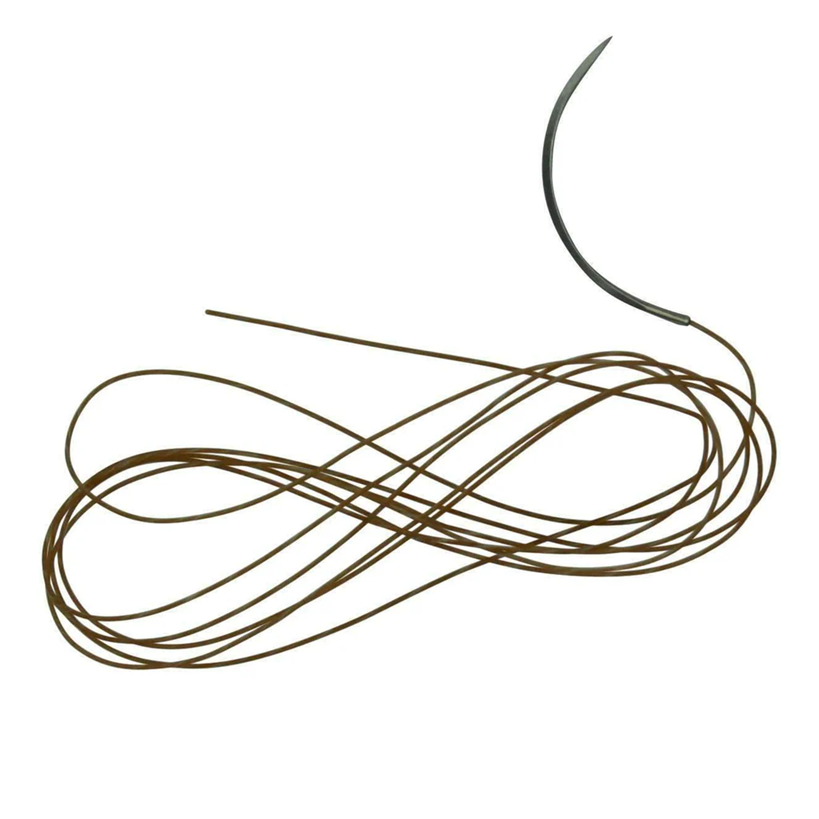Sutures are indispensable in the world of surgery, enabling the closure and healing of wounds. Among the various types of sutures available, chromic catgut sutures are widely recognized for their unique properties and applications. This blog delves into what chromic catgut sutures are, their advantages, and how they compare to other sutures.
What Are Chromic Catgut Sutures?
Chromic catgut sutures are a type of natural absorbable suture. They are made from purified collagen derived from the intestines of sheep or cattle. These sutures undergo a special treatment with chromium salts, which gives them unique characteristics such as prolonged tensile strength and delayed absorption.
The term “chromic” refers to this chromium salt treatment, which enhances the suture’s durability and reduces the inflammatory response during the healing process.
Key Features of Chromic Catgut Sutures
- Absorbability: Chromic catgut sutures are absorbed by the body naturally, eliminating the need for removal. The absorption process typically takes 20-40 days, depending on tissue type and individual patient factors.
- Tensile Strength: Compared to plain catgut sutures, chromic catgut sutures maintain their tensile strength for a longer period, usually up to 10-14 days.
- Reduced Tissue Reaction: The chromium treatment minimizes tissue inflammation, making these sutures suitable for sensitive areas.
- Biodegradable: Being made from natural collagen, chromic catgut sutures are biodegradable and environmentally friendly.
Applications in Surgery
Chromic catgut sutures are commonly used in procedures where temporary support is required. Key applications include:
- Obstetrics and Gynecology: For repairing episiotomies or cesarean sections.
- General Surgery: Used for closing soft tissue, such as subcutaneous fat and fascia.
- Gastrointestinal Procedures: Suitable for surgeries involving the digestive tract.
- Oral Surgery: Frequently employed in dental procedures to close incisions.
- Urology: Effective for suturing internal tissues with quick healing requirements.
Advantages of Chromic Catgut Sutures
- Prolonged Support: The chromium treatment provides longer-lasting tensile strength compared to plain catgut sutures.
- Reduced Risk of Inflammation: The treated surface minimizes irritation and promotes smoother healing.
- Ease of Use: Chromic catgut sutures are pliable and easy to handle, making them a favorite among surgeons.
- No Removal Required: Their absorbable nature simplifies post-operative care for patients.
Limitations to Consider
While chromic catgut sutures have numerous advantages, they also have some limitations:
- Variable Absorption: The rate of absorption can vary based on patient-specific factors such as age, health condition, and the type of tissue.
- Reduced Strength Over Time: While initially strong, their strength diminishes as they are absorbed, making them unsuitable for long-term support.
- Potential Allergic Reaction: Though rare, some patients may experience sensitivity to natural collagen-based materials.
Chromic Catgut Sutures vs. Synthetic Alternatives
With advancements in surgical materials, synthetic sutures like polyglycolic acid (PGA) and polyglactin 910 have become popular. However, chromic catgut sutures still hold their ground due to:
- Their natural origin, which aligns with specific patient preferences.
- Faster absorption rates, making them ideal for rapid-healing tissues.
- Cost-effectiveness compared to some synthetic options.
Conclusion
Chromic catgut sutures remain an essential tool in modern medicine, combining tradition with effectiveness. Their natural origin, absorbable nature, and enhanced properties make them a preferred choice in various surgical applications.
While synthetic alternatives have gained traction, chromic catgut sutures continue to serve as a reliable option, particularly in procedures requiring temporary support and minimal tissue reaction. For surgeons and patients alike, they represent a timeless blend of simplicity and functionality.



Leave a Reply